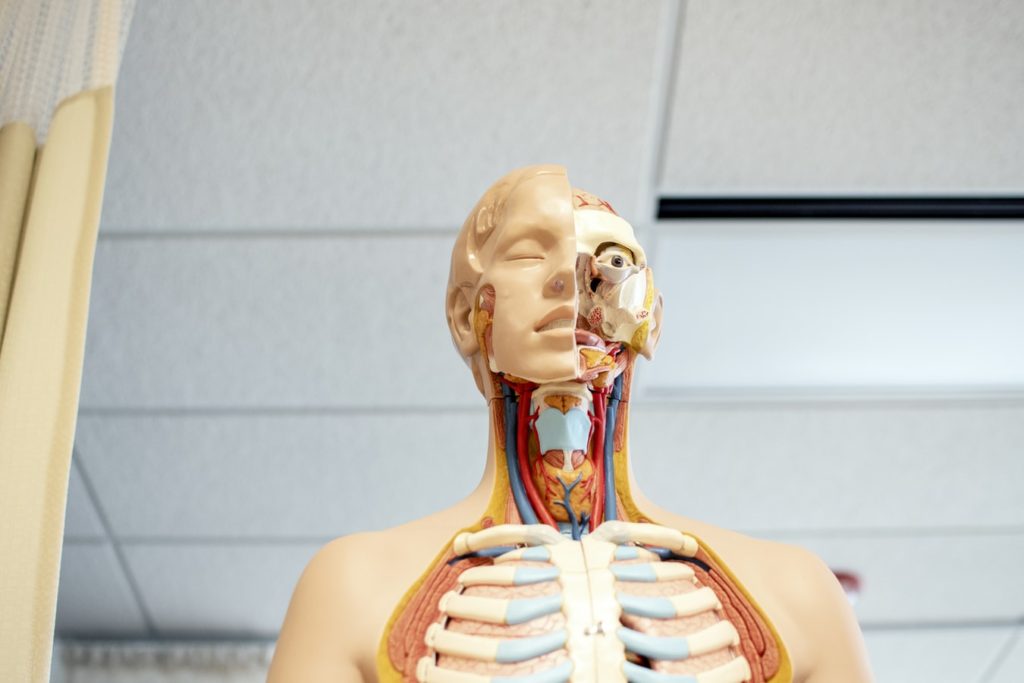State medical boards license physicians and oversee the practice of medicine. The goal is to serve the public by protecting people from incompetent, unprofessional, and improperly trained medical doctors.
As part of that effort, medical boards require doctoral candidates to pass a rigorous series of examinations. These tests are designed to evaluate the ability to apply knowledge, concepts, and principles of health and disease to ensure the candidate for licensure is qualified to deliver safe and effective patient care.

The Federation of State Medical Boards of the United States and the National Board of Medical Examiners established this 3-step examination for medical licensure in the United States, known as the United States Medical Licensing Examination (USMLE). The USMLE gives all states a uniform system to determine a doctor’s fitness for licensure.
The exams are one of the last steps a doctoral student must take on the path to becoming a fully licensed physician authorized to practice medicine.
Passing the USMLE is absolutely essential. Much is at stake, including an investment of four years or more in medical school at a cost now averaging more than $150,000. All of that time and money is for naught if the doctoral candidate fails the USMLE.
This is where a medical boards tutor can make a difference.
These tutors have an expert knowledge of the medical boards – the questions, the methodology, what the scores mean and how the results are used to determine medical licensing. To tutor in this field, you’ll need excellent-to-perfect scores on the medical boards as well as training in effective teaching techniques.
The rewards of this career path are plentiful. You’ll be helping med students succeed on what is one of the most important tests of their lives while earning an above average income. Medical boards tutors can make a lot of money with good marketing and an excellent reputation. Read on to learn how you can become a medical boards tutor.
In this article you’ll learn:
- How much money you can make as a medical boards tutor
- The required training and certifications
- Professional groups to join
- Employment opportunities for medical boards tutors
- Finding clients
- Plus helpful tips
How much money can you make?
Medical boards tutors charge anywhere from $150 to nearly $400 an hour, based on a review of companies that offer these tutoring services. Working a standard 40-hour week, an industrious tutor could bring in $24,000 a month based on $150 per hour. That works out to $288,000 a year with full-time tutoring. Serious money.
Your ability to set prices depends on several factors, including your experience, a successful track record in taking the examinations yourself and what sort of competition you face in your market. A licensed medical doctor who offers med boards tutoring as a moonlight gig will be able to charge more than someone who is not a licensed doctor, all other factors being equal.
Most tutors work part-time. The Bureau of Labor Statistics (BLS) reports that there are more than 1.2 million tutors employed throughout the United States, and the BLS expects that number to surpass 1.3 million by 2024.

Training and Certification
No formal licensing is required to set up shop as a medical boards tutor. But to get clients, you’ll need training, tutor certification and proof that you made excellent scores on the medical boards. No one is going to pay you $100 an hour or more until you can provide evidence that you know what you are doing. A bachelor’s degree in life sciences or a related field should be considered the absolute minimum level of formal education.
To tutor at the expert level, when you’ll be able to charge the most for your services, you’ll need to log at least 10,000 hours of experience, which is a little less than five years, tutoring full-time.

As a practical matter, most tutors in this field are either in med school as doctoral candidates. Some are licensed medical doctors who choose to tutor for a number of reasons – as a side gig to make extra money, for the love of teaching or as a way of working within the field of medicine without the stress that can come with it – or the expense of running a private practice with liability insurance, renting an office, hiring medical staff and all the other costs that come with self-employment.
Others gravitate toward tutoring because they have exceptional test-taking skills, which is a natural attribute for a tutor teaching students how to pass tests.
To secure a job with a tutoring company, you’ll probably need to be enrolled in med school or a candidate for a medical or doctoral degree.
The National Tutoring Association, Association for the Coaching and Tutoring Profession, the American Tutoring Association and the College Reading and Learning Association all endorse formal certifications that establish a tutor’s credibility. Along with experience, certification can also lead to a greater salary.
Professional Groups to Join
When you become affiliated with a professional group, you show students and potential employers that you are dedicated to your work as a medical boards tutor. You’re telling people that this is not just a job but a calling. These memberships look great on a resume when you’re job hunting. Benefits range from networking with other pros in your field to ongoing education and training, news about the profession and the sense of comradery that comes with belonging to a group whose members share your passion.
This list of professional organizations for tutors can help you discover what types of memberships are available and which ones might be right for you.
Many informal online groups are also available for you to join. These groups provide another forum for professionals to share ideas and insights. Many of these tutor groups can be found on Facebook. You can join as many groups as you like until you find the ones that best suit your interests.
Here’s a deep list of groups for tutors to help you get started.
Employment
There are many companies that offer medical boards tutoring services throughout the United States. Some have a national presence, such as MedBoard Tutors, while others may be independent and locally owned, often by physicians in the community.

You’ll want to prepare your resume, both printed copies and a digital version for online distribution. Sending job application materials via email or through the recruitment page of a company’s website is a fast and efficient way to reach many potential employers, compared to hitting the Post Office with a huge stack of thick, manila envelopes stuffed with your printed information. When sending resumes by email, the best way to attach this document and supporting materials is by creating .pdf files of the documents with Adobe Acrobat. These types of files are considered safe to send and are less likely to trigger a spam alert in the recipient’s mailbox. Follow this tip and you’ll have a much better chance that your online correspondence lands in front of a real person, not a spam folder.
You’ll need certified copies of your medical boards tests to show that you have passed these examinations with top scores. Also make photocopies of your professional certifications and memberships in tutoring organizations. These extra materials can pull your application to the top of the pile and set you apart from competitors for the same job.
Finding Clients
Business cards and a basic website should be the core of your marketing toolkit as a professional medical boards tutor. The website should be attractively designed, with photos of your workspace, and a few images of you in action, teaching students. Your business location and contact information should be clearly visible at the top of every page on your website. Search engines scan this information to match your website geographically with people searching for a tutor.

In addition to your business website, the next thing to do is create an Instagram account to showcase your services. Instagram is the top online venue for professionals to promote their work. It’s a free marketing tool that’s always working on your behalf.
Now set up a Facebook page for your tutoring services. This is a great way to build a following, offer a few free test-prep tips and keep people up-to-date on your offerings.
Be sure to create a Google My Business page, where you can add hours of operation, photos and an interactive map of your location. This helps people in your geographic area find you.
All of these services are free. Setting up a page on each site takes less than an hour.
Other strategies for attracting new students:
- Create a referral program with discounts for people who send new students to you.
- Ask students to review your tutoring services online. According to a recent survey, 90% of people say their buying decisions are influenced by positive online reviews.

Good to know
While you can plan your tutoring sessions in whatever way works best for each student, generally it’s helpful to prepare for each of the individual exam stages in the order students will take them. Here is the sequence:
USMLE Examinations
Step 1 of the USMLE is typically administered after the first 2 years of medical school. This portion of the test evaluates the student’s ability to understand and apply science concepts fundamental to the practice of medicine. Passing Step 1 means the student has demonstrated mastery of the sciences that provide a foundation for the safe and competent practice of medicine.
Step 2 is taken prior to graduation from medical school. This section tests the student’s medical knowledge, skills, and understanding of clinical sciences essential for proper patient care and tests their knowledge of disease prevention and good health practices.
Step 3 comes on the heels of postgraduate training, typically one year after medical school while the student is completing a residency. This final stage assesses the new doctor’s ability to apply medical knowledge and understanding of biomedical and clinical sciences without direct and constant supervision. This is the final assessment of doctors before receiving a license to practice medicine.
If you enjoyed this article, check out some more great PocketSuite.io content that can help you grow your career as a medical boards tutor. Here’s a great place to start.PocketSuite has thousands of business owners who all started where you are right now. Our community is always happy to help you ramp up, grow your client base, and achieve your income goals, both within the PocketSuite app and as part of our exclusive Facebook Community Group. PocketSuite’s vision is for any professional to be able to work for themselves and make a great living. It starts here. It starts with you. It starts today. Let’s get started, download PocketSuite now! Feel free to reach out with any questions (we’d love to hear from you)! Text us @ (415) 841-2300.





